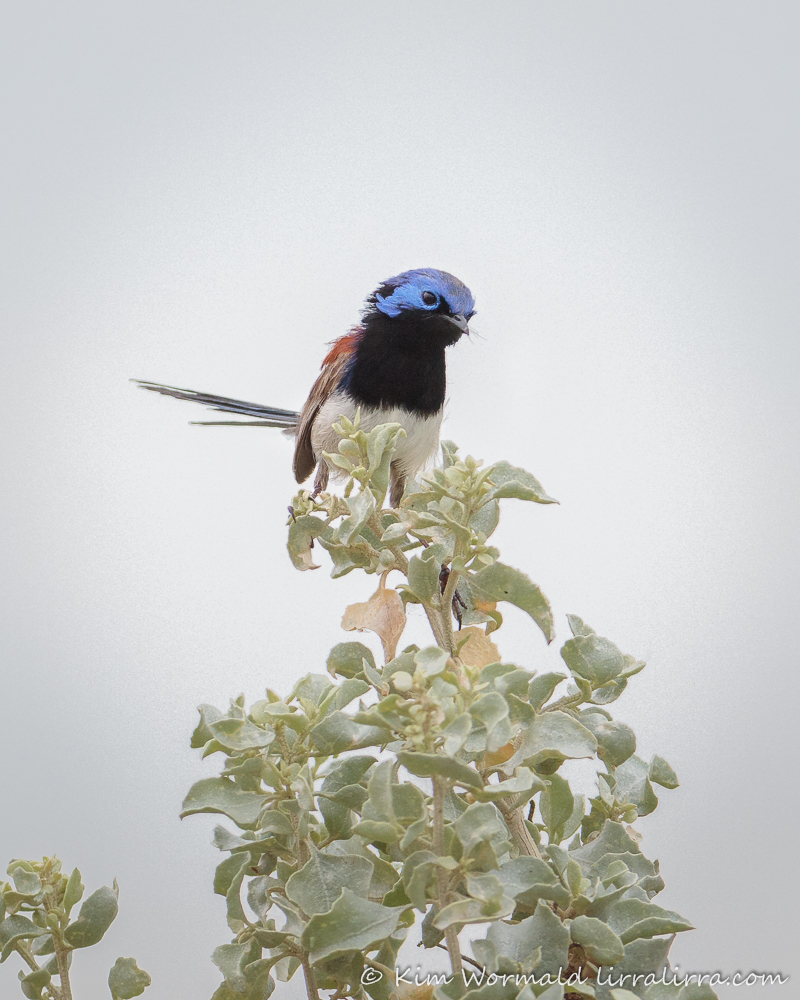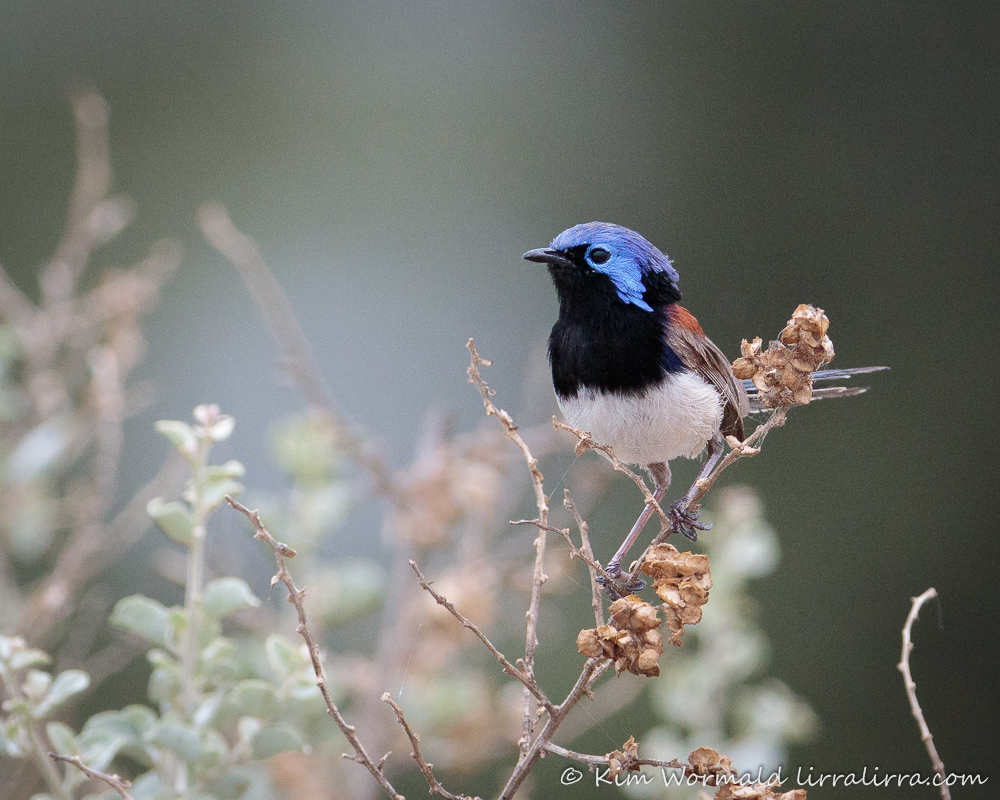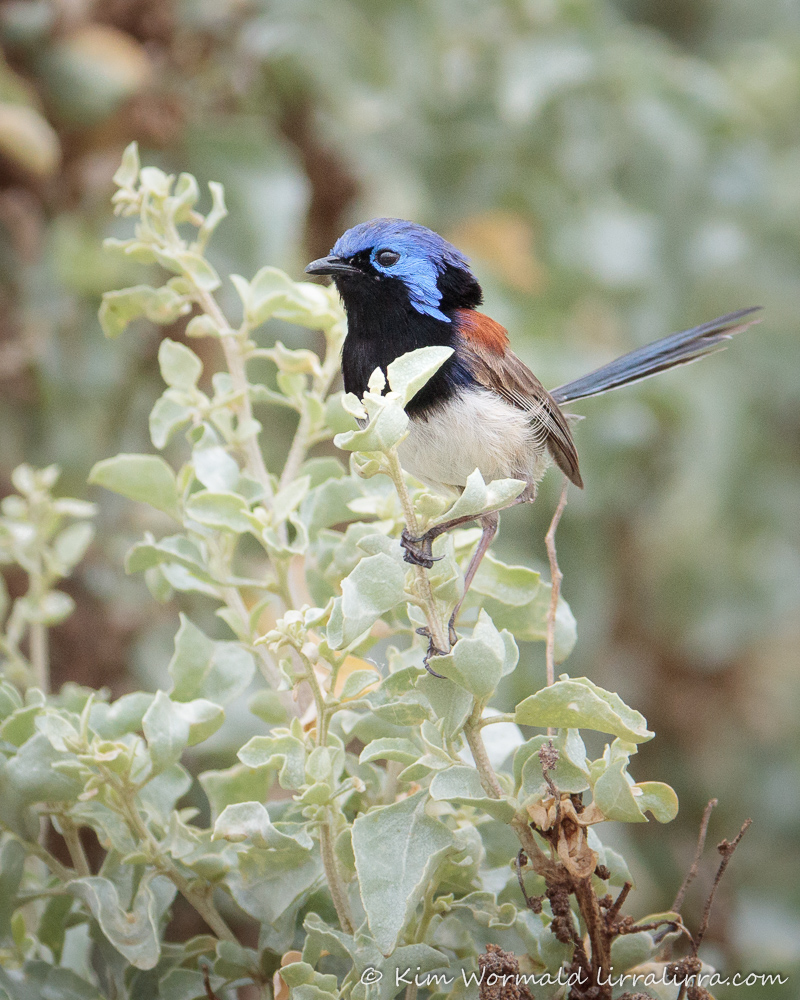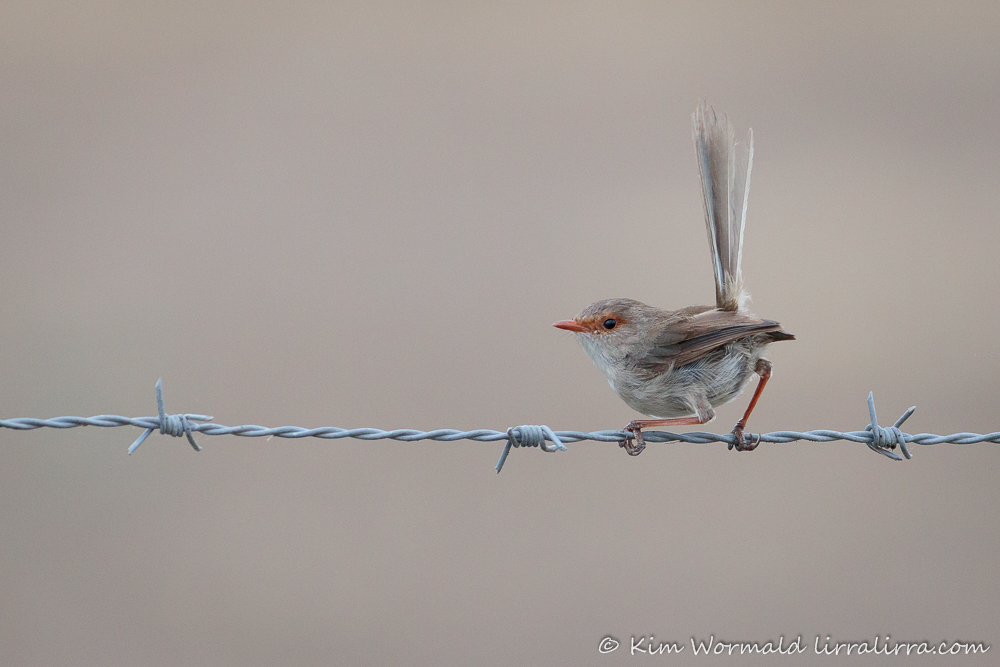The first time I saw Variegated Fairy-wrens I was heading to the Great Sandy Desert for a scientific expedition. Edgars Range is at the northern edge of the Great Sandy, it’s not a typical range rising from the heat-haze but an extensive cutaway (dissected landscape, divided by erosion) that we peered into. Climbing down the rocky sides of the gorge took us to magical places, including one patch of vegetation where a family of Variegated Fairy-wrens added to the magic – I was mesmerised.
 Variegated Fairy-wren (Malurus lamberti) – male
Variegated Fairy-wren (Malurus lamberti) – male
1/1250, f/5.6, ISO 1600
~
Last weekend I attended Breakfast with the Birds, an excellent event hosted by the North Central CMA at Lake Cullen, northwest of Kerang. Following the event I explored local farming roads. Luckily the car windows were open as I heard the sound of wrens calling and pulled up to investigate.
~
Variegated Fairy-wren (Malurus lamberti) – male
1/1600, f/6.3, ISO 1600
~
Three fairy-wrens were foraging, moving quickly along fences and among the roadside vegetation. The male was still in his breeding colours with his bright blue head and chestnut shoulder patches. His black lores, throat and chest contrast sharply with the soft white of his underbelly.
Variegated Fairy-wren (Malurus lamberti) – male
1/1250, f/5.6, ISO 1600
~
These fairy-wrens are the most widespread of the nine fairy-wren species and can be found across most of mainland Australia. They are about 14cm in length and weigh about 8g. Apparently their tails are longer than the tails of Superb Fairy-wrens and White-winged Fairy-wrens.
Variegated Fairy-wren (Malurus lamberti)
1/800, f/5.6, ISO 1600
The female Variegated Fairy-wren used the roadside fence to move between the bushes. She rapidly changed position and the image above captured her just as she was about to fly. I was wondering if she was a juvenile bird until I noticed that her tail feathers are looking quite worn.
I hope to see more of these magical birds in the coming weeks, and hopefully the light will allow me to capture better images.
Happy birding
Kim
UPDATES
Birdlife Australia Photography Group’s Digital Photography in the Bush is coming up in March – Details and registration information
The duck shooting season is due to start in March, the duck rescue team would welcome new volunteers – Coalition Against Duck Shooting
I’ve recently found a fabulous arborist who removed unsafe branches while respecting habitat and even suggesting cuts to serve as microbat roosts – see links page
~ thank you for visiting and commenting
~ if you would like to join the subscribers receiving a weekly email when lirralirra is updated, please use the ‘subscribe’ box above right




Just beautiful Kim. That first one looks like a painting, delicate.
What a beaut comment, thank you Evie.
These are so beautiful! It’s great to have been there to see the effort and patience required to get these shots!
I don’t often have company when I’m photographing birds, I think it’s your patience that deserves the accolade!